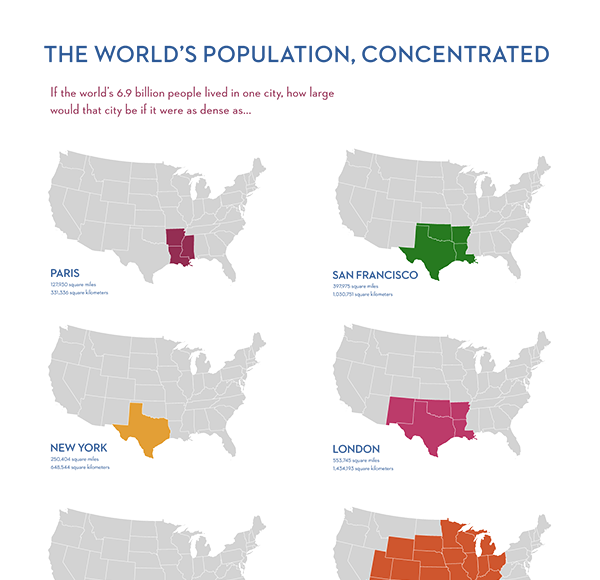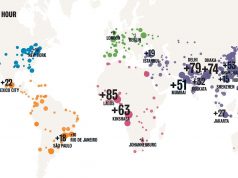Tim De Chant of Persquaremile.com put together this map to answer the question: Just how densely populated is our world anyway? (Tim has written for the Chicago Tribune, Scientific American, Ars Technica, the Atlantic Cities, Grist.org, and others.)
If the world's now seven billion people lived in one city, just how big would that city be? This question is reminiscent of the one Buckminster Fuller pondered. Fuller speculated that the world's population (1960s era) would fit at cocktail party densities in the buildings of Manhattan. Spaceship earth has added a few billion more people since then, but wrapping some kind of spacial reference around the question of population is intriguing and goes a long way towards better understanding the threats and opportunities of population growth.
If all the people alive today were collected in one place at a density similar to that of a Paris, we would need about 130,000 square miles of land to accommodate them all. That is a remarkable comparison given that Paris remains a rich, livable city. If, on the other hand, all the people alive today were to be assembled in one place at an urban density comparable to Houston's, well, things begin to get ugly. We'd require 4,600,000 square miles of inhabitable land to accommodate them all.
That's not smart.
We don't have to follow the Houston model. Designers using MESH City solutions will further improve our ability to live sustainable, comfortable lives at urban densities even greater than that of Paris. Cars in MESH Cities will be energy efficient. Ubiquitous mass transit systems will be managed by complex algorithms and intelligent machine to machine networks that put people first. Water infrastructure and resource management systems will work to ensure that every litre of water will be used wisely. Advanced logistics systems will get food from farmers to consumers in a way that uses precious, arable land sustainably.
Tomorrow's world does not have to be a disaster. Designers know how to make our cities and our planet work. We just have to make the right choices and act on them.







